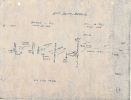|
Welcome,
Guest
|
What's the difference between a GP40-2 and GP39-2? What year did the Reading dieselize? How many tracks were in Rutherford Yard? This board focuses on a discussion of questions or issues concerning the "prototype" Reading Company and its predecessors. While the aim of this board is to serve as a resource for prototype information for modeling purposes, general discussion and sharing of knowledge is also encouraged.
|
TOPIC: Power on coal trains in 1948
Power on coal trains in 1948 6 years 10 months ago #6376
|
|
|
Power on coal trains in 1948 6 years 10 months ago #6378
|
|
|
Power on coal trains in 1948 6 years 10 months ago #6379
|
|
|
Power on coal trains in 1948 6 years 10 months ago #6381
|
|
|
Power on coal trains in 1948 6 years 10 months ago #6383
|
|
|
Power on coal trains in 1948 6 years 10 months ago #6384
|
|
|
|
Did You Know?
November 14, 1948
Service on the "Schuylkill" Main Line train to Pottsville is inaugurated.
Downloads
Operations Information
 A variety of Reading Company operations related documents, etc. that may be of use in your modeling efforts.
A variety of Reading Company operations related documents, etc. that may be of use in your modeling efforts.
Operations Paperwork
 A variety of Reading Company operations paperwork, such as train orders, clearance forms, etc. that will help you operate your Reading layout in a prototypical manner.
A variety of Reading Company operations paperwork, such as train orders, clearance forms, etc. that will help you operate your Reading layout in a prototypical manner.
Timetables, Rulebooks, Etc.
 Public Timetables, Employe Timetables, and Rulebooks that provide much useful operational information.
Public Timetables, Employe Timetables, and Rulebooks that provide much useful operational information.
Modeling Goodies
 Signs, billboards, and other FREE goodies for your use. We ask only that you help spread the word about The Reading Modeler!
Signs, billboards, and other FREE goodies for your use. We ask only that you help spread the word about The Reading Modeler!
Rolling Stock Reference




